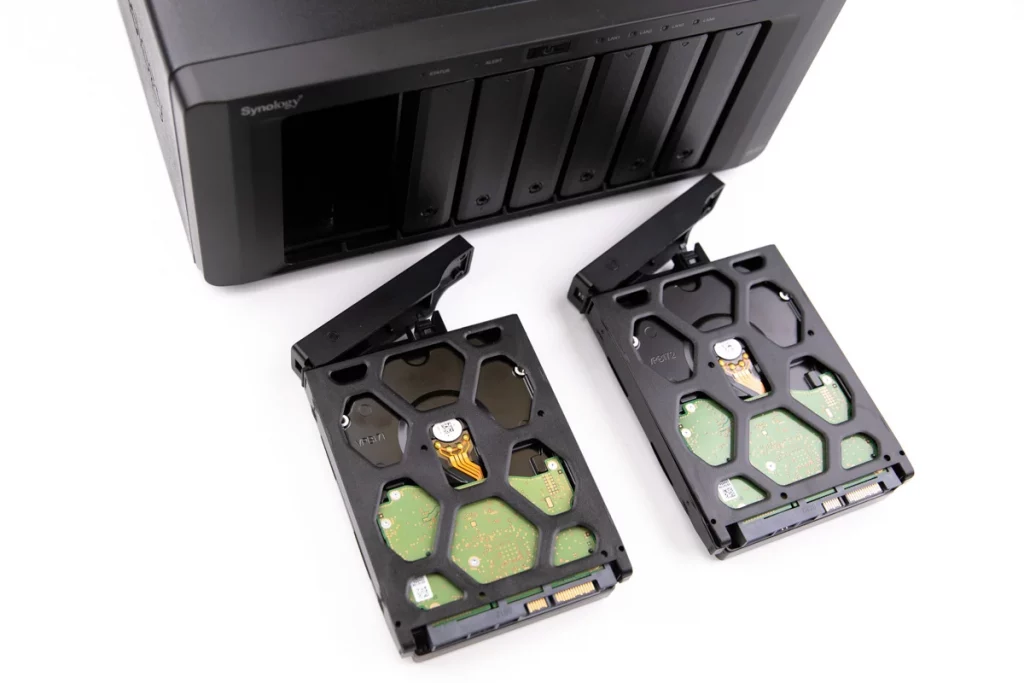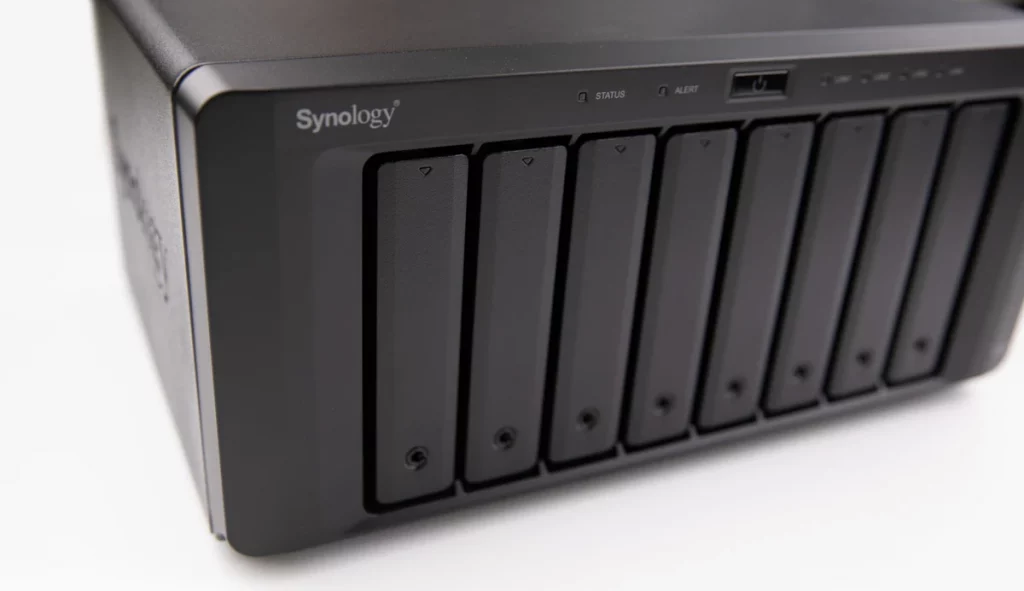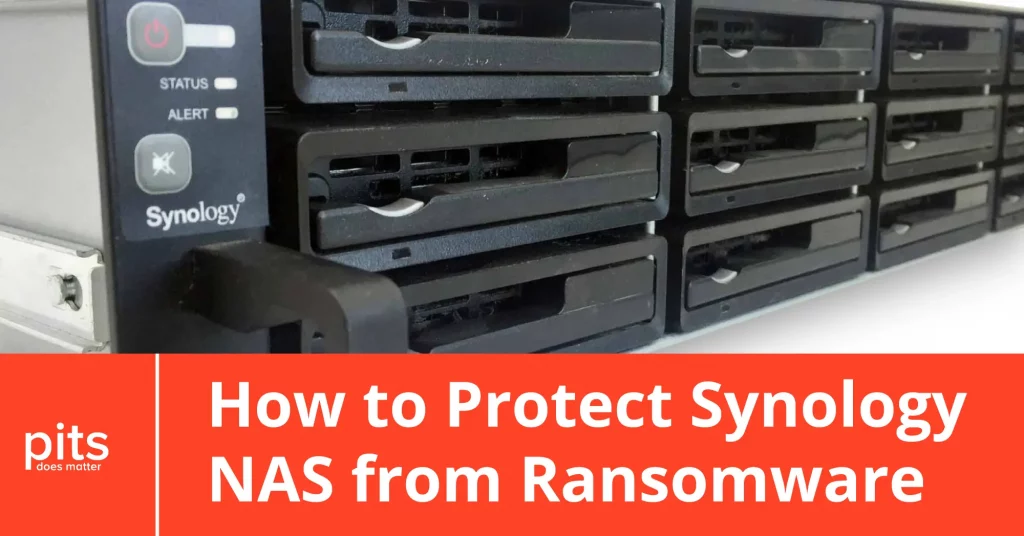How to protect Synology NAS from ransomware is a question that resonates with many concerned individuals and organizations as the risk of cyber threats continues to escalate. Data is the new gold in this digital world, and its protection should be a top priority.
This blog aims to guide you through some critical strides toward safeguarding your Synology NAS and mitigating the risk of ransomware attacks. However, if an unfortunate event does occur and your NAS falls prey to ransomware, remember that all hope is not lost. PITS Global Data Recovery specializes in NAS recovery and offers valuable rescue services, ensuring they do not lose your data in the labyrinth of ransomware.
Synology Ransomware Protection Best Practices
Synology Ransomware Protection is the best approach to preventing ransomware attacks on your Synology NAS. Here are some best practices that you should follow to minimize the chances of an attack on your NAS:
Keep Your Software Up-to-date
Ensure that all software and applications installed on your NAS are up-to-date with the latest security patches and versions. Outdated software can be an effortless entry point for ransomware.
Use a Strong Password
Always use strong passwords for your NAS login. Avoid using generic and easily guessable passwords, such as “password123” or “123456789.” Attackers commonly use these to gain unauthorized access.
Limit User Access
Limiting user access privileges can significantly reduce the risk of ransomware attacks. Only grant access to necessary users and regularly review user permissions.
Disable Unnecessary Services
Disable any unnecessary services or applications on your NAS. The more services running, the higher the attack surface for cybercriminals.
Enable Firewall and Intrusion Prevention
Enable firewall and intrusion prevention features on your NAS to block unauthorized network requests and detect and prevent malicious activities.
Regularly Back Up Your Data
Backing up your data to an independent device or cloud storage is crucial in recovering from ransomware attacks. In case of an attack, you can simply restore your data from a backup rather than paying the ransom.
Keep a Secure Offline Data Backup
Besides conducting regular backups, upholding the 3-2-1 and Backup-At-Rest principles is crucial for a secure offline data backup. Consistently verifying the successful restoration of backups is also essential. Furthermore, it’s important to note that PITS can help with data recovery without a data backup.
Make a Cyber Attack Plan
In the unfortunate event of a ransomware attack, having a well-thought-out plan can greatly minimize damage and facilitate a speedy recovery. This should include isolating the infected device from your network and contacting security or data recovery experts. Additionally, it is advisable to maintain an emergency contact list for quick access to relevant personnel in such situations.
Protect Synology NAS from Ransomware Infection Methods
Protect Synology NAS from Ransomware by understanding how these attacks occur and developing an effective protection strategy. Here are some common methods attackers use to infect Synology NAS with ransomware and ways to prevent them:

- Phishing: Phishing emails are a common method cybercriminals use to spread ransomware. Be careful when opening email attachments, mainly from unknown senders or those requesting personal information.
- Outdated Software: As mentioned earlier, outdated software can give attackers an easy entry point. Ensure you regularly update your NAS software and applications to their latest versions.
- Malicious Websites: Avoid visiting suspicious or unknown websites as they may contain ransomware or malicious scripts that can infect your NAS upon visiting.
- Weak Passwords: Weak passwords make it more comfortable for attackers to gain access to your NAS and infect it with ransomware. Utilize robust passwords and consider enabling two-factor authentication for an added layer of security.
- Unsecured Network: If your network is insecure, attackers can easily access your NAS from other connected devices. Ensure you have a robust network security setup in place.
- Social Engineering: Attackers may try to trick you into giving them access to your NAS through social engineering tactics. Be cautious when sharing personal information, and always verify the authenticity of requests.
Protect Synology from Ransomware with Response Checklist
To protect Synology NAS from ransomware, in addition to the prevention methods mentioned above, having a response checklist can be helpful. Here are some steps you should take in case of an attack:
Disconnect the Infected Device
If one device on your network is infected, disconnect it immediately to prevent further ransomware spreading.
Contact Security Experts
Contact a security expert or your IT support team to help identify and contain the ransomware.
Isolate the Attack
Isolating the attack can prevent further damage to other devices on your network.
Identify the Ransomware
Identify the ransomware type to determine if a known decryption key is available.

Do Not Pay the Ransom
It is not advisable to pay the ransom as it does not guarantee that you will get your data back. Plus, paying the ransom only fuels future attacks.
Restore from Backup
Restore the data from a backup rather than paying the ransom.
Inform Authorities
Report the attack to relevant authorities, such as the local law enforcement and cybersecurity agencies, for further investigation.
Following these best practices and having a response checklist can protect your Synology NAS from ransomware attacks and minimize the risk of losing your valuable data.
Synology Data Recovery by PITS Global Data Recovery Services
PITS Global Data Recovery Services offers professional data recovery for Synology NAS devices in the unfortunate event of a ransomware attack. Our team of experts has years of experience in recovering data from various types of ransomware attacks and can assist you in retrieving your valuable data.
Contact us for more information on our services and how we can help secure your data against ransomware threats. Remember always to stay vigilant and regularly review your security measures for a safe computing experience.
Frequently Asked Questions
How to secure your Synology NAS?
Securing your Synology NAS involves the following:
- Taking preventive measures such as updating software.
- Using strong passwords.
- Being cautious of phishing emails.
Regularly backing up your data and having a response checklist in case of an attack can also help secure your NAS.
What should I do in case of a ransomware attack on my Synology NAS?
In the event of a ransomware attack, it is important to disconnect the infected device, contact security experts for assistance, isolate the attack, identify the type of ransomware, avoid paying the ransom, restore data from backup, implement stronger security measures after recovery, and report the attack to relevant authorities.
Can PITS Global Data Recovery Services help recover Synology data after a ransomware attack?
Yes, PITS Global Data Recovery Services specializes in recovering data from ransomware attacks on Synology NAS devices. Our team of experts can assist you in retrieving your valuable data and restoring your system to its pre-attack state.
Does Synology protect against ransomware?
Synology NAS devices have built-in security features such as firewall and intrusion prevention and offer options for data backup and antivirus protection. However, it is important to regularly review and update security measures to protect against evolving ransomware threats.
How to implement Synology Virus Protection?
To implement virus protection on your Synology NAS, enable the built-in antivirus feature or install a third-party antivirus application from the Synology Package Center. It is also important to keep your software and applications up to date for added protection against known vulnerabilities.
